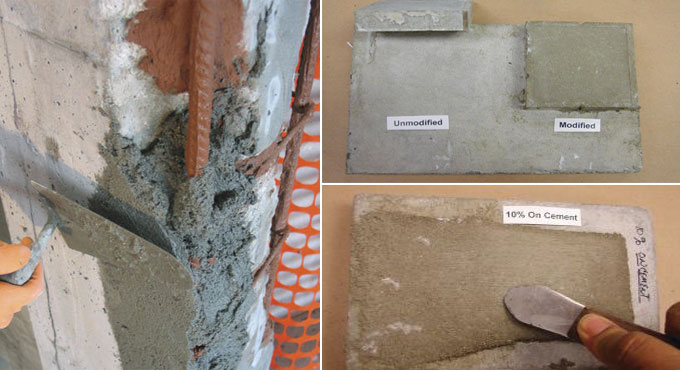
Characteristics of polymer-Modified Mortar

Mortar is considered as one of the vital components in masonry construction. It is normally formed by mixing water with portland cement, hydrated lime and sand. If the proportions of each of these ingredients are changed, strength and other characteristics may differ. Mortar with polymeric admixtures is applied extensively and inexpensively in definite situations.
Basics and function: Polymer-modified mortar is developed by interchanging a part of the conventional binders with polymers. Polymers are included with mortar to enhance the characteristics which may contribute to adhesion, toughness, flexural or tensile strength, and resistance to chemicals.
The purpose of the polymers is to make the capacity of work and adhesion of non hardened mortar better and often need fewer quantity of extra water as compared to conventional mortar. It leads to less pores and high capacity cements, consequently the immersion of water & and penetrability to salts are decreased.
Types of Polymers: Polymer-modified mortar is commercially obtainable with all constituents already provided in the mixture. Conversely, polymer additives separated into classes, are included with mortar mix. Redispersible polymer powders like ethylene vinyl acetate are normally included with dry mortar mix.
Water-soluble polymers like polyvinyl alcohol belong to powders but are added to wet mortar mix. Aqueous latex suspensions comprise of latex particles hanged up in water to coat hydrating cement particles. At the end, liquid polymers as epoxy resins or unsaturated polyesters are included throughout mixing to develop a network of cemented polymer hydrate and thus the strength of the mixture is raised significantly.
Application: Polymer-modified mortar is employed in a wide array of mortar and concrete repair and primary construction applications. Low water level and salt infiltrations transform polymer-modified mortar suitable for masonry prone to weathering and other exterior conditions. The main objective of polymer-modified thinset mortar is to bind tile to concrete and cement board substrates devoid of immersing the tiles earlier. Polymer-modified mortars are frequently applied for repairing purposes due to their low shrinkage and capacity to tie with even solid surfaces.
Supplementary Possible Admixtures: Besides, polymers, other types of materials can be included with mortars to attain required characteristics. Color pigments may be included with mortar to change the look of the mortar. If accelerators and retarders are included, these can decrease or raise the length of time necessary for the mortar to be cured, a vital characteristic to control in severely cold or warm, humid weather. Other mortar additives range from mineral additions, like silica fume, aggregates and inert fillers, plasticizing chemical admixtures and fibers to manage shrinkage efficiently.


